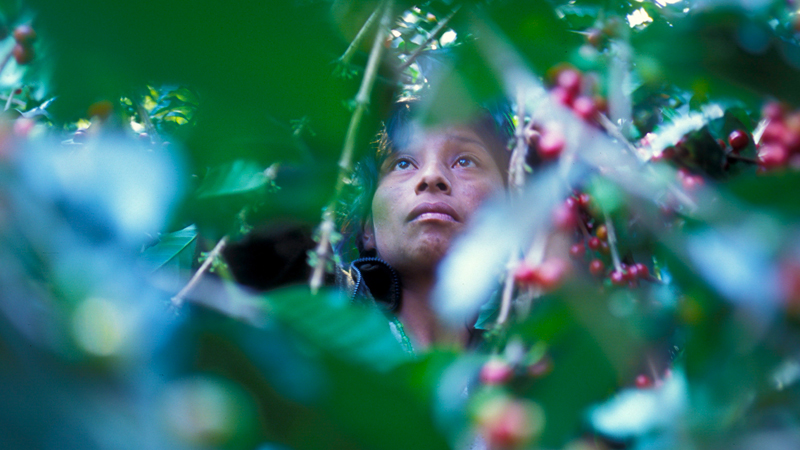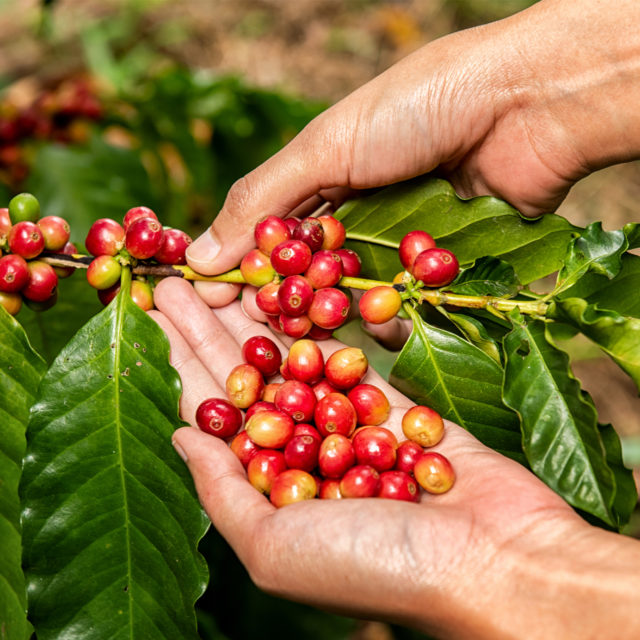The volcanic topography and tropical climate of Central America make the narrow isthmus between North and South America well-suited for coffee growing. All seven countries in the region grow coffee, and several of them do so with astonishing, specialty-grade results.
In fact, most of the countries here, including Costa Rica and Guatemala, host a Cup of Excellence, an annual competition that rigorously evaluates and scores the finest lots. Started 20 years ago, the competition determines which coffees may ultimately gain acclaim, as winners are auctioned off online to global buyers.
These factors have contributed to Central America’s reputation for quality, a region now boasting some of the world’s most expensive and sought-after coffees.
Panama
Better known for its Canal and American retirement communities, Panama’s small coffee industry enjoyed a meteoric rise in the last 15 years. Discovery of the Ethiopian Geisha (also referred to as Gesha) variety in Panama’s Boquete, around Volcán Barú, the highest mountain in the country, led to the highest prices in the world paid at auction for this Cinderella coffee.
Curiously, Geisha was discovered on the farm of Hacienda La Esmeralda not for its quality but for the utilitarian value of its resistance to leaf rust disease. The coffee world discovered Geisha’s unique profile in 2004 when La Esmeralda submitted lots to the Specialty Coffee Association of Panama’s “Best of Panama” competition and won. Like planting Pinot Noir around the world to recreate the magic of Burgundy, Geisha, too, has spread, but no other terroir captures the tea-like delicacy, bright citrusy acidity, and whiff of jasmine produced by Boquete Gesha. The most esteemed lots topped $1,029 per pound in 2019.
Costa Rica
Coffee is a vital part of Costa Rican life. It’s in the cultural bloodstream as well as a core component of the economy, comprising 3 percent of exports and ranking third in agricultural products. Coffee grows everywhere here due to Costa Rica’s rich volcanic soil, high elevation, and mild temperatures. Though there are eight distinct regions with different cup profiles, Tarrazu, situated nearly a mile high, accounts for a third of Costa Rica’s crop.
Despite a long history of production, Costa Rican specialty grade is a new and exciting phenomenon, notably for its development of the honey process. Costa Rican coffees are complex with creamy sweetness, berry, apple, brown sugar, and honey notes, with lively acidity. Caturra and Catuaí are the most common varieties, with Typica, Bourbon, and Geisha right behind.

Guatemala
Guatemala has a long coffee-growing history, by some accounts dating back to the Jesuit presence in the 1750s. It took another 100 years before coffee became integral to the economy, when it replaced indigo as a cash crop. Today, Guatemala ranks second in volume production in Central America. Quantity does not limit quality here, though, with top regions earning protected denomination of origin (D.O.).
Guatemalan coffees at their best can be complex, floral or fruity, even spicy, with chocolate and caramel notes and bright acidity. Distinct coffees are grown around the Spanish colonial town of Antigua, set amidst a volcanic landscape that receives robust rainfall. Within this accredited area, the key coffee varieties, Bourbon, Caturra, and Catuaí, often exhibit a nutty character. Other regions that consumers may see on roasted coffee package labels are Fraijanes and Huehuetenango.
El Salvador
Coffee production has played an important role in El Salvador’s economy since the late 19th century. As James Hoffman writes in his book, “The World Atlas of Coffee,” the crop has helped fund El Salvador’s infrastructure and integrate its indigenous population into the market. In the early 20th century, coffee accounted for 90 percent of El Salvador’s exports.
A civil war in the 1980s and a drop in global prices of commodity coffee in the 1990s put immense pressure on the thousands of small farms and workers who depended on rising (or stable) prices for their welfare. The silver lining: Heirloom Bourbon trees were never replaced with higher-yielding, lower-quality varieties. Such wealth of heirlooms makes El Salvador’s coffees rich with complexity and a juicy and sweet cup profile.

Honduras
Central America’s top producer of coffee by volume, Honduras has historically produced beans for blends as much of its coffee wasn’t distinct enough for marketing as a single-origin. The backbone of the industry is 100,000 small farmers who weather the hurricanes (literally), coffee rust disease, and challenging transportation infrastructure to deliver beans for the world market.
Honduran specialty-grade coffees are known for their full-bodied flavor that is moderately sweet with juicy acidity, and tinged with apricot and chocolate. Bourbon, Caturra, Catuaí, and Typica varieties are commonly grown.
Nicaragua
Catholic missionaries brought coffee to Nicaragua in 1790. Later, between 1840 and 1940, what became known as the “Coffee Boom” saw coffee become integral to the economy as a commercial crop for export.
Bordering Honduras to the south and Costa Rica to the north, Nicaragua shares aspects of both — mountainous terrain, defined dry and rainy seasons, the threat of hurricanes, and a challenging transportation network.
The best Nicaraguan coffees, often based on Caturra or Bourbon, exhibit lovely balance with a medium body, clean acidity, and lifted notes of citrus or florals. These desirable traits contrast with the nuttier, heavier coffees found across Central America.
